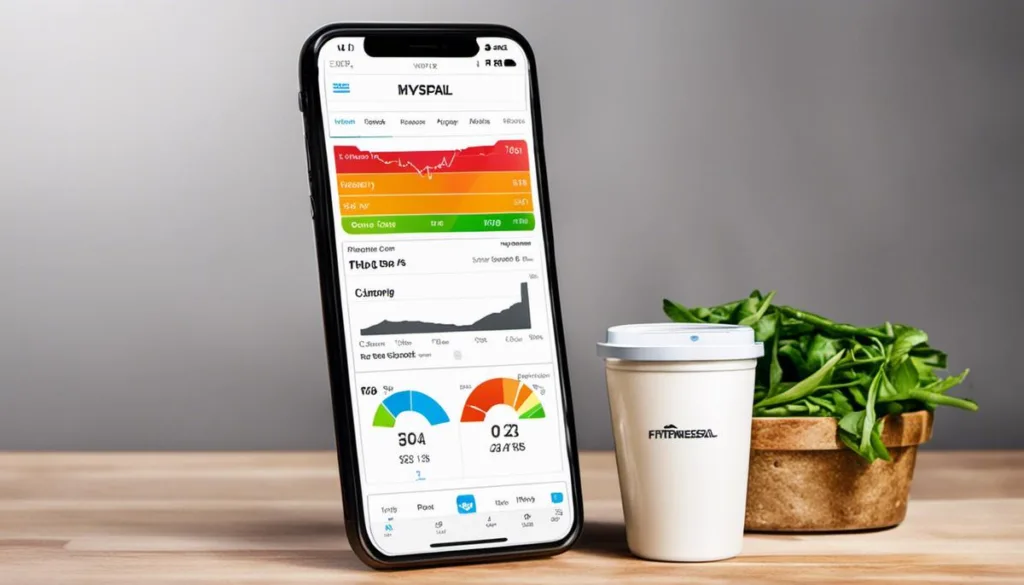Monitoring your calorie intake is hands down one of the most effective ways to take control of your health and weight. But I get it – calorie tracking can seem super intimidating, especially if you’re new to the idea. This guide’s got you covered though! I’ll walk you through the calorie counting basics, provide helpful tips for tracking your food, and share some motivation to keep you going strong. Get ready to learn how calorie monitoring can empower you to reach those health goals of yours!

Calorie Counting 101
Before jumping into calorie tracking, it’s key to understand what calories are and how to figure out your calorie needs.
What Are Calories Anyway?
Simply put, calories measure the energy in foods and drinks. Your body uses the calories from carbs, proteins, fats and alcohol as fuel. How many calories you need daily depends on your BMR, activity level, and weight goals. Eat less calories than you burn and you’ll lose weight. It’s a calories in vs calories out thing.
Calculating Your Basal Metabolic Rate (BMR)
Your BMR is the minimum amount of calories your body burns just to perform basic functions like breathing, blood circulation and organ function. Here’s how to estimate your BMR:
Ladies:
BMR = 655 + (4.35 x weight in pounds) + (4.7 x height in inches) – (4.7 x age in years)
Fellas:
BMR = 66 + (6.23 x weight in pounds) + (12.7 x height in inches) – (6.8 x age in years)
This tells you around how many calories your body goes through at rest in 24 hours. More muscle = higher BMR.
Factoring in Activity Level
Next up, determine your total daily calorie expenditure (aka how many calories you burn daily through your BMR plus activity) by factoring in your activity level:
- Sedentary (little to no exercise): BMR x 1.2
- Lightly Active (light exercise 1-3 days/week): BMR x 1.375
- Moderately Active (moderate exercise 3-5 days/week): BMR x 1.55
- Very Active (hard exercise 6-7 days/week): BMR x 1.725
- Extra Active (very hard exercise & physical job): BMR x 1.9
Pick the level that best matches your current exercise regimen and lifestyle. When in doubt, go with lightly to moderately active to start. Tweak as needed depending on your rate of weight loss.
Creating a Calorie Deficit
To lose weight at a healthy 1-2 pounds per week, you’ll need to eat a little less than your total daily calorie expenditure. Cutting 500-1000 calories daily makes a solid calorie deficit for weight loss. Too big of a deficit can backfire though, so set a realistic goal that works with your activity level and prevents hunger.
Re-Evaluating Your Calorie Targets
Weigh yourself weekly while tracking calories. If the scale isn’t budging like you want, adjust your calorie goal. As you lose weight, your calorie needs decrease since your body has less mass to sustain. Recalculate your BMR periodically and factor in weight changes so your deficit keeps working its magic.

Picking the Right Calorie Tracker
With your calorie target established, it’s time to pick a tracking method. Let’s explore some top options:
Calorie Counting Apps for On-the-Go
Calorie counting apps like MyFitnessPal, Lose It! and Cronometer make tracking super simple by letting you log meals from huge databases. Just search for a food or drink and enter the amount you ate. Their barcode scanners provide instant nutrition info for packaged goods. Apps also give helpful charts to visualize macro and micro intake.
Website Trackers for Customization
Many calorie apps have website versions with more customization like creating foods, logging recipes, tracking beyond just food, and generating detailed nutrition reports. Use the website on your desktop for enhanced tracking flexibility.
Old School Pen and Paper
A food journal is the OG calorie tracking. While you’ll have to manually look up and tally calories, a simple notebook and pen can work great for basic tracking. Customize your food diary’s layout with columns for calories, carbs, protein, fat, etc.
Find What Works for You
There are lots of great options out there. Choose trackers that fit your habits, preferences and needs for comprehensiveness, ease of use, features and level of detail. Test a few to find your faves. Many allow you to seamlessly track across platforms.

7 Tips for Calorie Tracking Success
Consistently logging your food intake is key for calorie tracking victory. Use these pro tips:
Tip 1: Whip Out the Food Scale
Weighing and measuring your meals prevents guesswork and tracking mistakes. Measuring cups also come in handy for portioning grains, liquids and small foods. Data accuracy FTW!
Tip 2: Keep a Food Diary
Jot down everything you eat and drink – cooking methods, brands, weights, amounts and all – in a mini notebook or your phone. Making this a habit makes tracking second nature.
Tip 3: Use Calorie Counting Apps
Apps give instant access to extensive food databases for easy logging anytime, anywhere. Find one that best fits your needs for usability, features and database accuracy. Let technology simplify tracking!
Tip 4: Weigh Yourself Weekly
Track your weight at the same time every week. This shows whether your current calorie intake supports your goals or needs adjusting. Tying weight data to calorie data = success!
Tip 5: Stick to Nutrient-Dense Foods
Make your tracking life easy by building meals around wholesome, minimally processed eats like lean protein, fruits, veggies, whole grains, beans and legumes. Their calories come with good nutrients. Win-win!
Tip 6: Don’t Underestimate Hidden Calories
Oils, dressings, sauces and condiments pack major calories despite small portions. Measuring carefully prevents underestimating intake. This vigilance = tracking precision.
Tip 7: Review and Adjust Regularly
Weigh yourself weekly and review your tracking trends to ensure your deficit is working. Promptly adjust calories if your rate of loss is faster or slower than ideal. Check-ins enhance success!

Staying Motivated: Tips and Tricks
Calorie tracking requires dedication. Here are some motivation tips:
Make Tracking Non-Negotiable
Tracking daily provides essential diet feedback and eating awareness. Make recording calories a can’t-live-without habit. Consistency is key, so consider tools or reminders to help it stick.
Celebrate Milestones
Set calorie tracking milestones, like logging for 30 days straight, and reward hitting them. Even small victories build momentum, so pat yourself on the back. You got this!
Find Accountability Buddies
Asking friends or family to track with you provides built-in motivation and support. Joining weight loss communities also connects you with tracking pals. Shared struggles and successes make the journey easier.
Visualize Your Inspiration
Make a vision board with motivational photos, healthy recipes and quotes. Keep it visible for quick motivation when dedication dips. Visual reinforcement is powerful stuff.
Track Your Wins
Log each successful tracking day with an “X.” Seeing those X’s accumulate shows your persistence pays off. Let your awesomeness inspire you to keep crushing it!
Common Tracking Mistakes to Dodge
Watch out for these sneaky tracking slip-ups:
Forgetting Those Sneaky “Taste Calories”
Snacking on ingredients while cooking adds up fast calorie-wise. Measure first, plate meals before eating, and track every taste to prevent under-reporting.
Estimating Portions
Guessing serving sizes instead of measuring can lead to major inaccuracies. Whipping out your measuring tools eliminates this tracking margin of error. Weighing and measuring FTW!
Ignoring Liquid Calories
It’s easy to mindlessly sip caloric coffee drinks, sodas and juices. But beverages contribute bigtime calories, so diligently measure and log every drop you drink.
Choosing Generic Food Entries
Opting for generic database entries can provide inaccurate nutrition stats. Be specific when logging meals for maximum precision. Brand names and details matter!
Skipping Tastes and Bites
“It’s just a bite” can derail your tracking when those tastes, bites and nibbles add up. Resist nibbling mindset and log ALL morsels consistently. No calorie gets left behind!
Overestimating Exercise Calorie Burn
Devices often overestimate workout calories burned. Use a more conservative activity calorie estimate so you don’t eat back more than you torched.
Take Charge of Your Health With Calorie Tracking
Calorie tracking gives powerful insights to accelerate your health and weight loss success. By increasing your diet awareness and accountability, calorie monitoring helps you efficiently reach your goals. Use the handy tracking tips, motivation strategies and mistake prevention in this guide to set yourself up for victory.
With calorie counting by your side, you can feel confident and in control on your wellness journey. Consistency is key, so keep tracking accurately and regularly to get the results you deserve! Don’t forget to subscribe below for more regular food, nutrition, health, wellness and weight loss guidance. Wishing you all the best on your path to greater wellbeing!
Thank you for reading this post, don't forget to subscribe to our free newsletter
!
